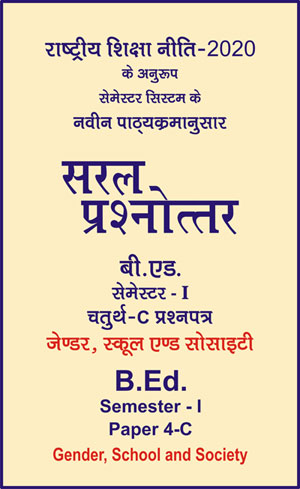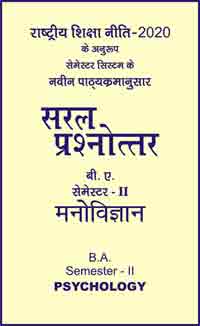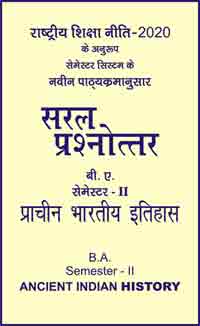|
बी एड - एम एड >> बी.एड. सेमेस्टर-1 प्रश्नपत्र-IV-C - जेण्डर, स्कूल एण्ड सोसाइटी बी.एड. सेमेस्टर-1 प्रश्नपत्र-IV-C - जेण्डर, स्कूल एण्ड सोसाइटीसरल प्रश्नोत्तर समूह
|
5 पाठक हैं |
||||||
बी.एड. सेमेस्टर-1 प्रश्नपत्र-IV-C - जेण्डर, स्कूल एण्ड सोसाइटी (अंग्रेजी भाषाा में)
Question- What is conservatism? What is the role of media in its formation?
Related Short Answer Questions
- What is ignored by stereotypes?
- What does research like material analysis reveal?
Answer -
In the 21st century, India is fast becoming a country where internet, television and cell phones are ubiquitous. They have entered the villages and small towns of India and only a few remote places are left untouched. In the last few decades, the media has increasingly become an important agent of socialization. One way in which the media influences our worldview is by retaining and perpetuating stereotypes. The characters we see on television and other media are often very direct and stereotypical. The portrayal of simple characters makes their stories clear for the makers as well as makes them easier for the audience to understand. However, these depictions perpetuate stereotypes.
A stereotype is a simplified and generalized representation of a social group that ignores diversity. It often has both positive and negative qualities about the members of the group and creates certain expectations about them. However, these stereotypes may change over time if conflicting information is provided. For example, based on his past experiences, a man may have a stereotype that women do not make good leaders. While on the job, he meets a young woman. His initial perception of him based on the available conservatism leads to the expectation that the young woman will not be a good leader. After having a conversation with her, he can soon realize that the orthodox belief is not so accurate and that the young woman actually has good leadership qualities. The man can then consider modifying his stereotypes of women. In some cases, however, the stereotype may remain unchanged as the young woman is seen as the exception. This can result in prejudice that manifests itself in negative feelings toward women, including feelings, such as contempt or pity.
Research using tools such as content analysis shows that the media is filled with stereotypical images of women, ethnic groups, the elderly, the disabled and many other groups. These media representations vary along two dimensions. The first dimension is related to the quantity of representation (under representation/over-representation) while the second is related to the quality of representation (positive/negative). Both, these dimensions are influenced by many factors like cultural, social, economic and political which differ in time and place. For example, historically some groups such as homosexuals have been under-represented in the media and even when they were represented there were still very negative images of them. However, their representation in the media has increased and they are now presented in the media in a more positive manner.
The question of ‘how’ groups will be represented in the media can be understood in the context of frame theory. This theory emphasizes the words and other symbols that are used to represent certain points of view and thus mold public opinion. For example, if certain groups are presented as threats to society, public opinion will become very negative and public policies will be drawn up to deal with these threats. These frames are influenced by many variables but in particular by the political perspective of the media.
|
|||||













